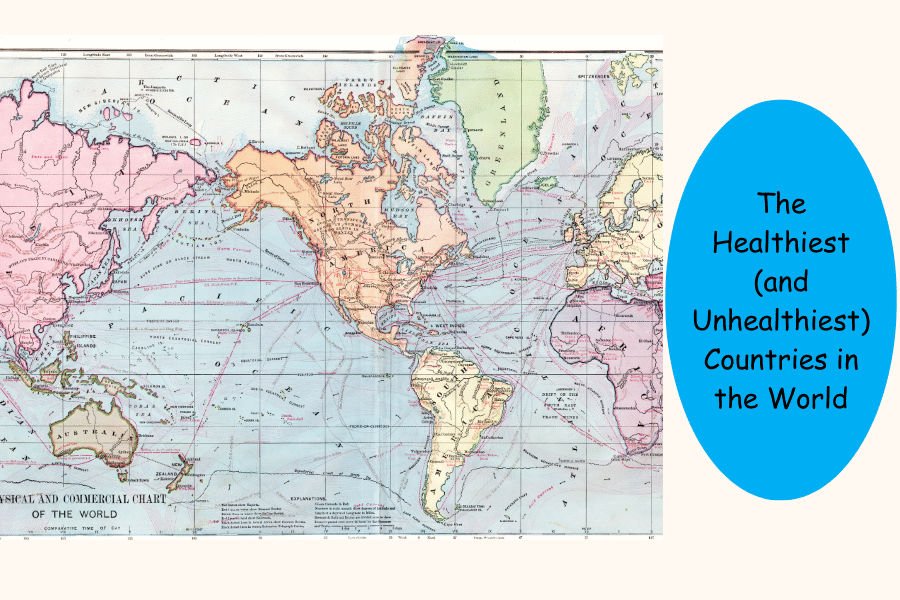Our health is a precious commodity, and the environment we live in plays a significant role in how well we thrive. So, which countries are leading the pack in terms of overall health, and where might there be room for improvement? Let’s explore!
Factors Influencing Health
Before diving into specific countries, it’s important to understand the key factors that contribute to a nation’s health ranking. These include:
- Healthcare Systems: Access to quality medical care, preventative measures, and affordability of treatment.
- Lifestyle Habits: Diet, exercise levels, smoking rates, and mental wellbeing.
- Environmental Conditions: Air and water quality, sanitation, and exposure to infectious diseases.
- Socioeconomic Factors: Income inequality, education levels, and social safety nets.
The Top Contenders: Healthiest Countries
Several countries consistently rank high on health indices. Here are some common threads in their success stories:
- Universal Healthcare: Many top-ranked countries boast universal healthcare systems, ensuring everyone has access to medical attention.
- Preventative Focus: These nations prioritize preventative measures like vaccinations, screenings, and healthy lifestyle education.
- Balanced Diets: Diets rich in fruits, vegetables, and whole grains are a hallmark of healthy populations.
- Active Lifestyles: Encouragement of physical activity through infrastructure and cultural norms is prevalent.
Top 10 Healthiest Countries
| Rank | Country | Life Expectancy (Years) | Strengths |
|---|---|---|---|
| 1 | Spain | 83.7 | Universal healthcare, Mediterranean diet, low obesity |
| 2 | Japan | 84.3 | Universal healthcare, focus on preventive care |
| 3 | Italy | 83.4 | Mediterranean diet, strong social safety nets |
| 4 | Iceland | 83.6 | Universal healthcare, high environmental quality |
| 5 | Switzerland | 83.9 | Universal healthcare, emphasis on preventive care |
| 6 | Singapore | 83.7 | Universal healthcare, focus on healthy lifestyles |
| 7 | Sweden | 83.2 | Universal healthcare, strong social safety nets |
| 8 | Norway | 83.2 | Universal healthcare, active lifestyle culture |
| 9 | Netherlands | 82.9 | Focus on preventive care, cycling infrastructure |
| 10 | Denmark | 82.7 | Universal healthcare, emphasis on mental wellbeing |
Challenges and Concerns: Unhealthiest Countries
While some countries excel in health outcomes, others face significant challenges. Here are some common themes:
- Limited Healthcare Access: Lack of infrastructure, resources, and trained medical personnel.
- Conflict and Instability: Civil unrest and war can devastate healthcare systems and infrastructure.
- Communicable Diseases: High rates of infectious diseases like HIV/AIDS, malaria, and tuberculosis.
- Poor Nutrition: Limited access to healthy foods and high rates of malnutrition.
Bottom 10 Unhealthiest Countries
| Rank | Country | Life Expectancy (Years) | Weaknesses |
|---|---|---|---|
| 1 | Central African Republic | 53.2 | Civil war, limited healthcare access, malnutrition |
| 2 | Chad | 62.3 | Limited healthcare access, high child mortality |
| 3 | South Sudan | 64.2 | Civil war, poor sanitation, infectious diseases |
| 4 | Niger | 62.9 | Limited healthcare access, high child mortality |
| 5 | Somalia | 60.4 | Civil war, famine, high rates of infectious diseases |
| 6 | Afghanistan | 64.8 | War, poverty, limited access to clean water |
| 7 | Yemen | 66.0 | Civil war, famine, limited healthcare access |
| 8 | Mozambique | 64.3 | HIV/AIDS epidemic, limited healthcare access |
| 9 | Lesotho | 58.7 | HIV/AIDS epidemic, high rates of tuberculosis |
| 10 | Malawi | 67.2 | HIV/ |
Which is the unhealthiest country in the world?
Based on the Legatum Prosperity Index (LPI), the unhealthiest country in the world is the Central African Republic. It struggles with:
- Low life expectancy: Around 53 years old, significantly lower than the global average.
- Limited healthcare access: Lack of infrastructure, resources, and trained medical personnel makes it difficult to receive proper care.
- High rates of malnutrition and infectious diseases: These issues are further worsened by civil war and instability.
What is the number 1 healthiest country?
The title of “number one healthiest country” can vary slightly depending on the specific ranking system used. However, based on current data, Spain frequently tops the charts. Here’s why Spain is a strong contender:
- Universal healthcare: This ensures everyone has access to preventive care and treatment, regardless of income.
- Preventative focus: Spain prioritizes measures like vaccinations, screenings, and public health campaigns to prevent illness.
- Mediterranean diet: Rich in fruits, vegetables, healthy fats, and whole grains, this dietary pattern is linked to numerous health benefits.
- Active lifestyle: Spain’s culture encourages physical activity, with walkable cities and a strong cycling infrastructure.
It’s important to note that other countries like Japan, Italy, Iceland, and Switzerland also consistently rank high on health indices due to similar strengths in their healthcare systems, preventative care, and healthy lifestyle habits.
What country is not healthy?
Several countries face health challenges, making it difficult to pinpoint a single nation as “not healthy.” Here’s a breakdown of some common issues that hinder health:
- Limited Healthcare Access: This can be a major barrier, especially in developing countries. Countries with limited resources often struggle to provide quality healthcare to all citizens. This results in higher rates of preventable diseases and lower life expectancy. (Examples: Many countries in sub-Saharan Africa)
- Conflict and Instability: Civil wars and political unrest disrupt healthcare systems, damage infrastructure, and displace people. This makes it difficult to access necessities like clean water and sanitation, leading to health problems. (Examples: Yemen, Syria)
- Communicable Diseases: High rates of infectious diseases like HIV/AIDS, malaria, and tuberculosis put a significant strain on healthcare systems and limit life expectancy. (Examples: Parts of sub-Saharan Africa, South Asia)
- Poor Nutrition: Lack of access to affordable, nutritious food can lead to malnutrition and diet-related illnesses. This is often seen in developing countries with limited agricultural resources. (Examples: Parts of sub-Saharan Africa)
If you’d like to explore specific countries facing health challenges, I can provide some examples based on your area of interest.
What countries have the most health problems?
While ranking the absolute “most” problematic countries can be subjective depending on the specific health issue, here’s a breakdown of regions and common health challenges they face:
Limited Healthcare Access:
- Many countries in sub-Saharan Africa grapple with this issue. Limited resources make it difficult to provide quality healthcare to all citizens. This leads to:
- Higher rates of preventable diseases like malaria, diarrhea, and respiratory infections.
- Lower life expectancy compared to global averages.
Conflict and Instability:
- Countries ravaged by civil wars or political unrest like Yemen and Syria see:
- Disrupted healthcare systems.
- Damaged infrastructure makes it hard to access clean water and sanitation.
- Increased vulnerability to infectious diseases due to displacement and poor living conditions.
Communicable Diseases:
- Parts of sub-Saharan Africa and South Asia face high rates of:
- HIV/AIDS puts a strain on healthcare systems and reduces life expectancy.
- Malaria is a mosquito-borne illness causing significant illness and death.
- Tuberculosis is a highly contagious respiratory illness.
Poor Nutrition:
- Lack of access to affordable, nutritious food is a problem in developing countries, particularly parts of sub-Saharan Africa. This leads to:
- Malnutrition hinders growth and development in children and increases vulnerability to illness.
- Diet-related illnesses like obesity and deficiencies.
Additional Considerations:
- Mental Health: Mental health issues are becoming a global concern, and access to proper care can be limited in many countries.
- Environmental Factors: Air and water pollution are significant health risks in some countries, impacting respiratory health and overall well-being.
It’s important to remember that health challenges are complex and often interconnected. A country might struggle with several issues simultaneously, making it difficult to isolate the “most” problematic one.
Which is the most hygienic country in the world?
Determining the absolute “most hygienic” country is tricky because hygiene encompasses various aspects. However, countries that consistently rank high on health indices often have strong systems in these areas:
- Sanitation: Efficient waste management, proper sewage treatment, and widespread access to clean toilets are crucial for hygiene.
- Water Quality: Safe drinking water readily available at home and in public places is essential to prevent waterborne diseases.
- Waste Management: Effective collection and disposal of waste minimizes health risks and promotes a clean environment.
Here are some countries that frequently perform well in these areas:
- Nordic Countries (Finland, Sweden, Norway): These nations are known for their clean air, water, and waste management practices.
- Singapore: Singapore prioritizes cleanliness and boasts a well-developed waste management system and high water quality standards.
- Netherlands: The Netherlands is a leader in sustainable practices and has a strong focus on clean water and sanitation.
It’s important to note that hygiene standards can vary within a country, and rankings might differ based on the specific criteria used. However, the countries mentioned above consistently demonstrate a strong commitment to creating a clean and healthy environment for their citizens.

I’m a seasoned content creator with 6+ years of experience crafting engaging, SEO-optimized content that drives traffic and rankings. I excel in keyword research, link building, and guest posting, ensuring your brand reaches new heights.

